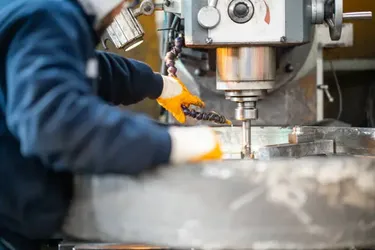What are the Real World Applications of a Lathe Machine?
Lathe machines have been a cornerstone of manufacturing and craftsmanship for centuries. They’re not just tools; they’re versatile devices that shape and transform materials in countless ways. Understanding their real-world applications can reveal how integral they are to various industries and everyday products.
1. Automotive Industry
One of the most prominent applications of lathe machines is in the automotive industry. Lathes are used to manufacture engine components, shafts, and other critical parts with precision. For example, they help create camshafts, crankshafts, and piston rods, which are essential for engine functionality. The ability to produce parts with exact dimensions and smooth finishes ensures that vehicles run efficiently and safely.
2. Aerospace Engineering
In aerospace engineering, the precision of lathe machines is crucial. Components for aircraft and spacecraft, such as turbine blades and landing gear, require extremely tight tolerances and perfect finishes. Lathes enable manufacturers to achieve these specifications, ensuring the performance and safety of aerospace vehicles. For instance, titanium and aluminum parts used in aircraft are often turned on lathes to meet rigorous standards.
3. Medical Devices
Lathe machines also play a significant role in the production of medical devices. Items like surgical instruments, prosthetics, and dental implants are often made with the help of lathes. Precision is vital in the medical field, and lathes help create components that meet the stringent requirements for accuracy and safety. Whether it's a custom orthopedic implant or a delicate surgical tool, lathe machines ensure these items are crafted to the highest standards.
4. Furniture Making
Beyond industrial applications, lathes are valuable in woodworking and furniture making. Carpenters and furniture makers use lathes to create turned parts such as table legs, chair spindles, and decorative elements. The lathe allows craftsmen to shape wood with intricate designs and smooth finishes, adding both functionality and aesthetic appeal to furniture pieces.
5. Jewelry Design
In the world of jewelry design, lathes are used to create detailed and precise components. Jewelers use lathe machines to turn rings, pendants, and other pieces with intricate designs. The ability to work with precious metals and gemstones allows for the creation of unique and finely detailed jewelry. Lathes help achieve the perfect polish and finish, which are essential for high-quality jewelry.
6. Electronics and Electrical Components
Lathe machines are also employed in the production of electronic and electrical components. Parts such as connectors, switches, and housings for electronic devices are often turned on lathes. The precision required for these components ensures that electronic devices function correctly and reliably. For example, the intricate housings for smartphones and other gadgets are often created using lathe machines.
7. Toolmaking
Toolmakers frequently use lathes to produce various tools and dies. The ability to shape metals and other materials precisely makes lathes indispensable in toolmaking. From creating cutting tools to manufacturing dies for molding and stamping, lathes help ensure that these tools perform effectively and have a long service life.
8. Prototype Development
In prototype development, lathes are used to create models and prototypes for testing and design purposes. Engineers and designers use lathes to turn out prototypes of new products or components, allowing them to test form, fit, and function before moving on to full-scale production. This application is vital for innovation and product development in many industries.
9. Education and Training
In educational settings, lathe machines are used to teach students about manufacturing and machining. By learning how to operate a lathe, students gain practical skills that are applicable in various industries. This hands-on experience is vital for preparing the next generation of machinists and engineers.
10. Metalworking
Metalworking is another area where lathes are extensively used. They are employed to produce parts for machinery, including shafts, gears, and bushings. The ability to machine metal accurately is crucial for ensuring that metal components fit and function correctly within larger systems.
Conclusion
Lathe machines are incredibly versatile tools with applications spanning from the automotive and aerospace industries to medical devices, furniture making, jewelry design, electronics, and toolmaking. Their ability to create precise, high-quality components makes them essential in many fields. Understanding the real-world applications of lathe machines highlights their importance in modern manufacturing and craftsmanship.
Related blog: How do I choose a lathe machine?



